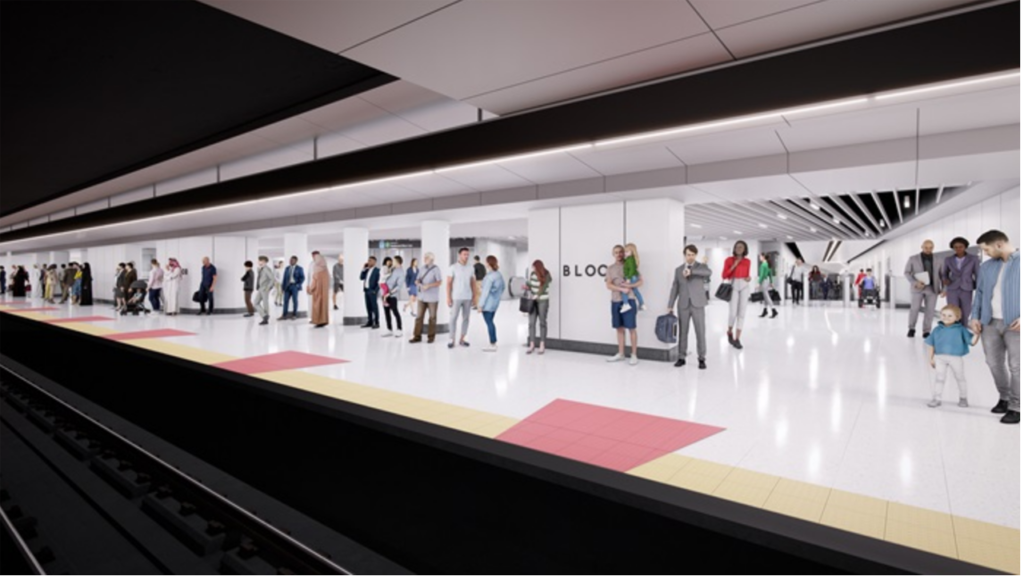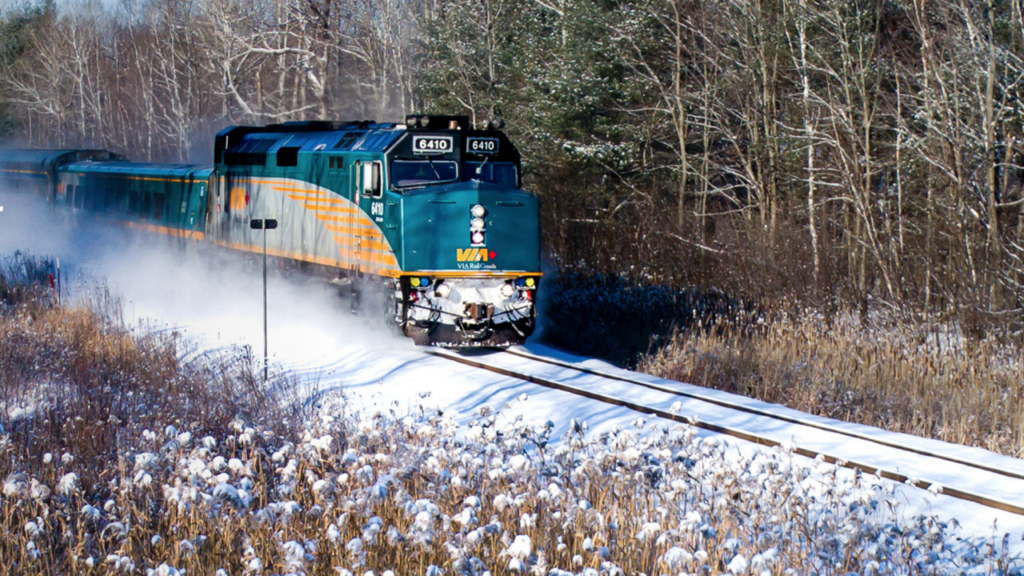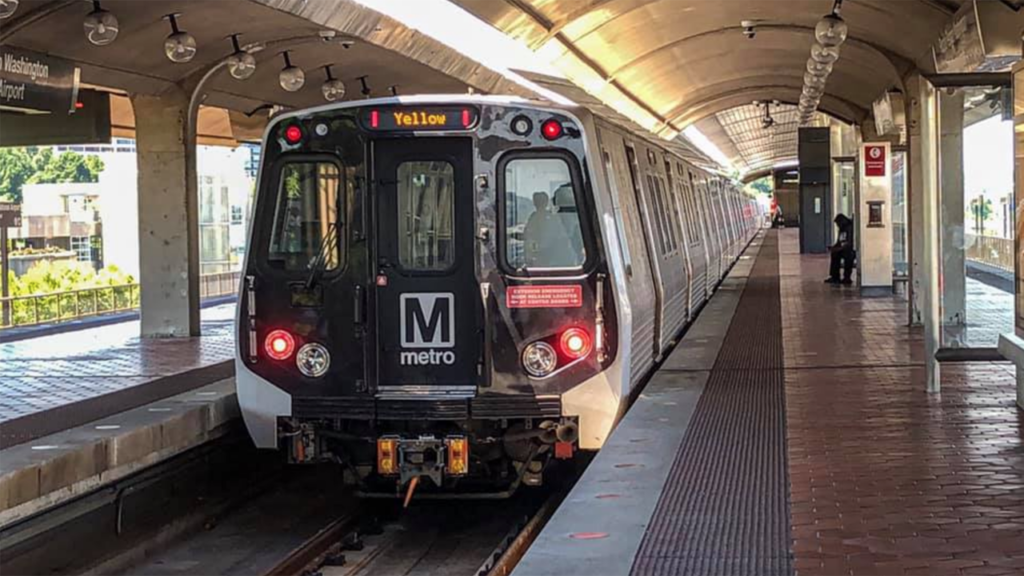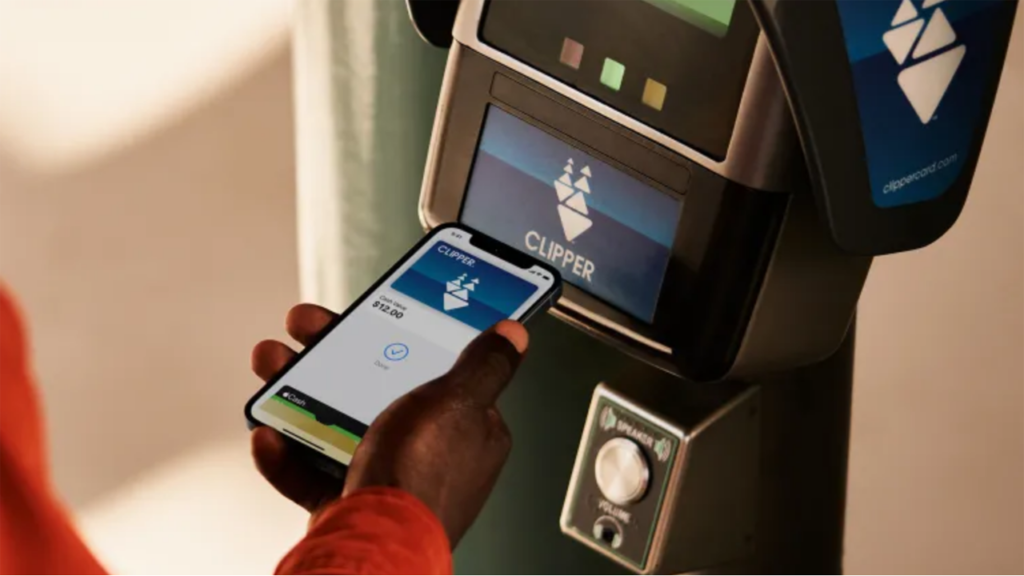
Transit Briefs: TTC, VIA Rail, WMATA, BART/MTC
Written by Marybeth Luczak, Executive Editor![VIA Rail is adding “buffer cars at the front and back end of all trains with [older] stainless steel equipment to reduce the consequences in the unlikely event of a train-to-train collision,” Canada’s government-owned passenger railroad told The Globe and Mail. This safety measure will remain until older cars can be reinforced and new Siemens trainsets (pictured) enter service. (Photograph Courtesy of VIA Rail Canada)](https://www.railwayage.com/wp-content/uploads/2022/10/VIA-Rail-Exterior-shot-5_Plan-Extérieur-5-1.jpg)
VIA Rail is adding “buffer cars at the front and back end of all trains with [older] stainless steel equipment to reduce the consequences in the unlikely event of a train-to-train collision,” Canada’s government-owned passenger railroad told The Globe and Mail. This safety measure will remain until older cars can be reinforced and new Siemens trainsets (pictured) enter service. (Photograph Courtesy of VIA Rail Canada)
The Toronto Transit Commission (TTC) selects AECOM as owner’s engineer for the Bloor-Yonge Station Capacity Improvements project. Also, VIA Rail Canada is adding “buffer” cars to some trains to improve safety; Washington Metropolitan Area Transit Authority (WMATA/Metro) reports that next month the Silver Line extension will be operationally ready to open, but it’s unclear if more 7000-series railcars will be approved for release to support it; and San Francisco Bay Rapid Transit District (BART) and the Metropolitan Transportation Commission (MTC) report a plastic Clipper® fare-card shortage.

AECOM on Oct. 19 reported that it will provide consulting services through all phases of TTC’s Bloor-Yonge Station Capacity Improvements project, including detailed design, procurement, construction, commissioning, handover and close-out.
The aim of the project is to improve service levels for TTC riders by constructing a new Line 2 platform at the Bloor-Yonge Station, which was built in 1953; expanding both Line 1 platforms; improving accessibility and safety; and enhancing the concourse level, entrances and exits, according to AECOM.
The firm’s scope of work is expected to include advisory services in the implementation of the delivery model; training and application of lean project delivery and building information modeling; development of project-specific output specification; estimating and costing services; design document review; and other services, including specific design assignments, as requested.
“Bloor-Yonge Station is a critical interchange—the busiest in Toronto’s subway system and one of the busiest in North America—and we’re thrilled to help deliver these important improvements for the community,” said Marc Devlin, Chief Executive of AECOM’s Canada region.
“The BYCI project is a monumental next step in improving service levels and addressing ridership growth from within and outside the city of Toronto,” said Sean Chiao, Chief Executive of AECOM’s global Buildings + Places business.

VIA Rail is adding “buffer cars at the front and back end of all trains with stainless steel equipment to reduce the consequences in the unlikely event of a train-to-train collision,” Canada’s government-owned passenger railroad told The Globe and Mail.
The empty buffer cars will act as “crumple zones” on trains that include 1950s-era stainless steel coaches to better protect riders and crew members, the newspaper reported on Oct. 19. “VIA said in an e-mail to The Globe and Mail it is taking the steps on the advice of a third-party [Hatch] engineering report while addressing the structural weaknesses of the cars.”
According to the newspaper, “A ministerial order requiring VIA to employ the safety measures was issued on Wednesday [Oct. 19] and will be made public on Thursday [Oct. 20], even though VIA has already taken the steps, said Nadine Ramadan, Press Secretary for Omar Alghabra, the Transport Minister.”
Bruce Snow, a Unifor executive representing 2,000 VIA Rail maintenance and on-board staff, told the newspaper that the safety measures will be in place until the “older cars are reinforced or replaced by the [32] new Siemens trainsets” that started being delivered last year for testing.
The Globe and Mail reported that car reinforcement is part of a “$200-million upgrade program that includes strengthening the aging chassis to better withstand collisions.”
VIA Rail did not provide the routes that include buffer cars, according to the newspaper. “In the e-mail, VIA said it has set up a technical task force of current and former VIA employees and representatives of Hatch, the engineering company that authored the safety report. ‘VIA Rail has shared its plan and is in regular contact with the Canadian rail safety regulator, and we have already begun rolling out our plan,’ VIA said.”
Additionally, VIA Rail has notified riders that “they can no longer transport their pets because the animals will be inaccessible in the baggage car, which is separated from the passenger car by the buffer car,” The Globe and Mail reported. “Also, some food and drink service will cease, as will use of the dome cars on some trips.”

After successfully completing two weeks of simulated service, Metro reported on Oct. 19 that it will be able to open the Silver Line extension to the Dulles Airport Station and Loudoun County, Va., in time for Thanksgiving, subject to approval this week of a safety certification report by the Washington Metrorail Safety Commission (WMSC).
Constructed by the Metropolitan Washington Airports Authority (MWAA), the Silver Line extension’s six new stations, 11.4 miles of new track, and new rail yard were turned over to Metro when the ORD (Operational Readiness Date) was declared on June 23. (The first phase of the Silver Line opened in July 2014, adding five new stations; Silver Line service currently operates from Largo Town Center Station, through Washington, D.C., and terminates at Wiehle-Reston East Station.)
According to Metro, it is finalizing its safety certification report to WMSC this week. “WMSC has worked alongside Metro for months and has stated that it expects to add their concurrence to Metro’s within hours or days after receiving the report from Metro’s Chief Safety Officer,” the transit authority reported. “Metro does not view the final Silver Line safety certification report as a barrier to preparing for the opening of passenger service before Thanksgiving holiday travel.”
Metro also reported that its senior safety and operations officials last month “expressed safety concerns about moving cars from other crowded [rapid transit] lines for new service, and that more trains were needed to support the [Silver Line] extension. Unfortunately, WMSC notified Metro Monday [Oct. 17] afternoon that it objects to Metro’s new (phase three) Return to Service Plan for the 7000-series railcars, following Metro’s submission of additional data analysis Friday [Oct. 14]. (The plan was first submitted on September 28 and was not approved citing ‘lack of data’ to support changing multiple variables at once).”
Last year, Metro sidelined all 748 7000-series rapid transit cars—built by Kawasaki Rail and representing nearly 60% of its fleet—after an Oct. 12, 2021 derailment. The National Transportation Safety Board’s (NTSB) investigation is ongoing; it reported on Dec. 1, 2021 that work would “focus on failure analysis of the wheelsets, evaluation of the response from rail traffic controllers, internal and external oversight of the WMATA system, and identification of similar wheelset issues on passenger railcars.”
Eight 7000-series trains resumed service in June, following WMSC approval of new inspection procedures and other measures; and Metro in September said it was approved to “safely operate up to 20 of its 7000-series cars per day, up from the current limit of eight trains.”
According to Metro, WMSC’s recent “rejection letter [of the Return to Service Plan] continues confusing direction.” The transit authority reported:
- “WMSC permits Metro to run trains inspected every seven days on any line, with employees operating and onboard. However, trains inspected every four days are only permitted to run with customers on the Red, Green and Yellow lines.
- “The letter indicates that there are differences in the track interface with trains on Blue/Orange/Silver lines that require monitoring, then indicates permission to run on those lines temporarily, but offers no metrics for successful completion.
- “The letter implies that Metro could swap axles to increase the fleet; however, that is operationally infeasible and would impact Metro’s ability to safely and efficiently manage its fleet, as well as changes many variables at once.
- “WMSC approved in December 2021 the use of the 7000 fleet on all rail lines, and is now using the same data analysis to justify fleet restrictions, with no definitive root cause identified in the NTSB investigation.”
“Metro recognizes the important role safety oversight plays and we are absolutely committed to compliance,” said EVP and Chief Operating Officer Brian Dwyer, who joined the transit authority in August. “Respectfully, after a yearlong investigation, we would welcome a directive based on a root cause finding. Meanwhile, we have developed an industry-leading inspection process in which we have high confidence.”
Metro reported that it “needs the WMSC’s concurrence this week to safely transfer trains into the various yards to support the restoration of service for stations south of National Airport, and to mobilize trains for the start of passenger service at Dulles Rail Yard. Additionally, Metro needs to align real-time communications systems and finalize other details to support passenger service. Local bus service providers have also requested a minimum of three weeks’ notice to provide connecting service to new rail stations.
“The phase three return to service plan is needed for both increased service frequency for customers systemwide and the Silver Line extension.
“The plan seeks to reconcile two current processes—one for test trains carrying Metro employees, the other for customer trains—and to implement a single standard for trains carrying employees and customers on all lines with seven-day inspections. It should be noted that for months, Metro has operated 7000[-series] trains for testing and training purposes under the exact terms included in its phase three proposal, which demonstrates the safety of its approach.”
EVP and Chief Safety Officer Theresa Impastato said, “We have provided all of the available data and analysis we have after safely running 2.7 million miles, however WMSC has provided confusing direction. We simply ask for clear guidance on what is required to satisfy them as to the integrity of our process.”
Metro said that while the NTSB “investigation has not yet identified a root cause for the derailment, Metro is seeking WMSC’s concurrence to adjust its fleet management while continuing the most robust program of wheel measurements in the transit industry by deploying:
- “All 748 7000-series railcars for passenger service (first time since October 2021).
- “7000-series trains in service on all rail lines.
- “Protocols to measure wheels every seven days.”
“As I said publicly at our September Board meeting with only half of our 7000s available, we cannot meet all of the region’s needs for Metrorail,” Metro General Manager and CEO Randy Clarke said.
The Washington Post on Oct. 19 reported that WMSC “defended its work, saying it has shown Metro the steps it must take to add more cars, but that the agency hasn’t used those data-supported approaches.
“‘The [safety commission] will continue to be driven by safety data and will continue to be open if Metro is interested in a collaborative, iterative process,’ safety commission spokesman Max Smith said Wednesday [Oct. 19].”
According to the newspaper, both Metro and WMSC “have also briefed members of the region’s congressional delegation, indicating they are at an impasse.
“Virginia Sens. Mark R. Warner and Tim Kaine, both Democrats, urged Metro and the safety commission to stop waging ‘turf battles’ and to ‘get their acts together’ to open the Silver Line extension.
“‘We are making it clear to both agencies: It’s time to get this done,’ they said in a joint statement.”
Late on Oct. 20, WMSC reported on Twitter that it “has just received from WMATA a proposed revision to Metrorail’s 7000 Series Return to Service plan. As with each of WMATA’s past proposals, the WMSC technical team has immediately begun to review this plan based on available data.”

Riders are being encouraged to put a Clipper fare-collection card on their mobile phones “because global supply chain issues have once again severely depleted the inventory of plastic cards,” according to BART and MTC, which operates the Clipper system on behalf of the region’s transit agencies. Clipper is available for mobile phones through either Apple Pay or Google Pay, they said on Oct. 18.
“Clipper through at least the end of this year will waive the standard $3 new card fee for customers who choose either of the mobile options for their new cards,” BART and MTC said. “The $3 fee will be charged to customers who opt for a traditional plastic Clipper card.”
With an Apple iPhone 8 or later or an Apple Watch Series 3 or later, Apple customers can add the card directly through Apple Wallet and load cash value with Apple Pay anytime, anywhere, according to BART and MTC. Customers with Android system phones running Android 5 or later similarly can add the Clipper card directly through Google Wallet and load cash value anytime, anywhere.
BART has installed signs near ticket vending machines at its stations to let riders know they can save $3 by putting Clipper on their mobile phones. Additionally, it has temporarily reprogrammed ticket vending machines at its San Francisco International Airport station to issue old-style paper tickets instead of plastic Clipper cards. Clipper cards may still be refilled and used at the station, but only paper tickets will be sold.
“While the acute shortage of plastic Clipper cards is expected to continue for several months, customers who use fare-discount cards such as those for seniors, youths, the Clipper START® program for lower-income adults, or the RTC Clipper card for disabled riders under age 65 need not worry about dwindling inventories,” BART and MTC reported. “These special-purpose cards are distributed directly by Clipper and produced on a different card stock.”


